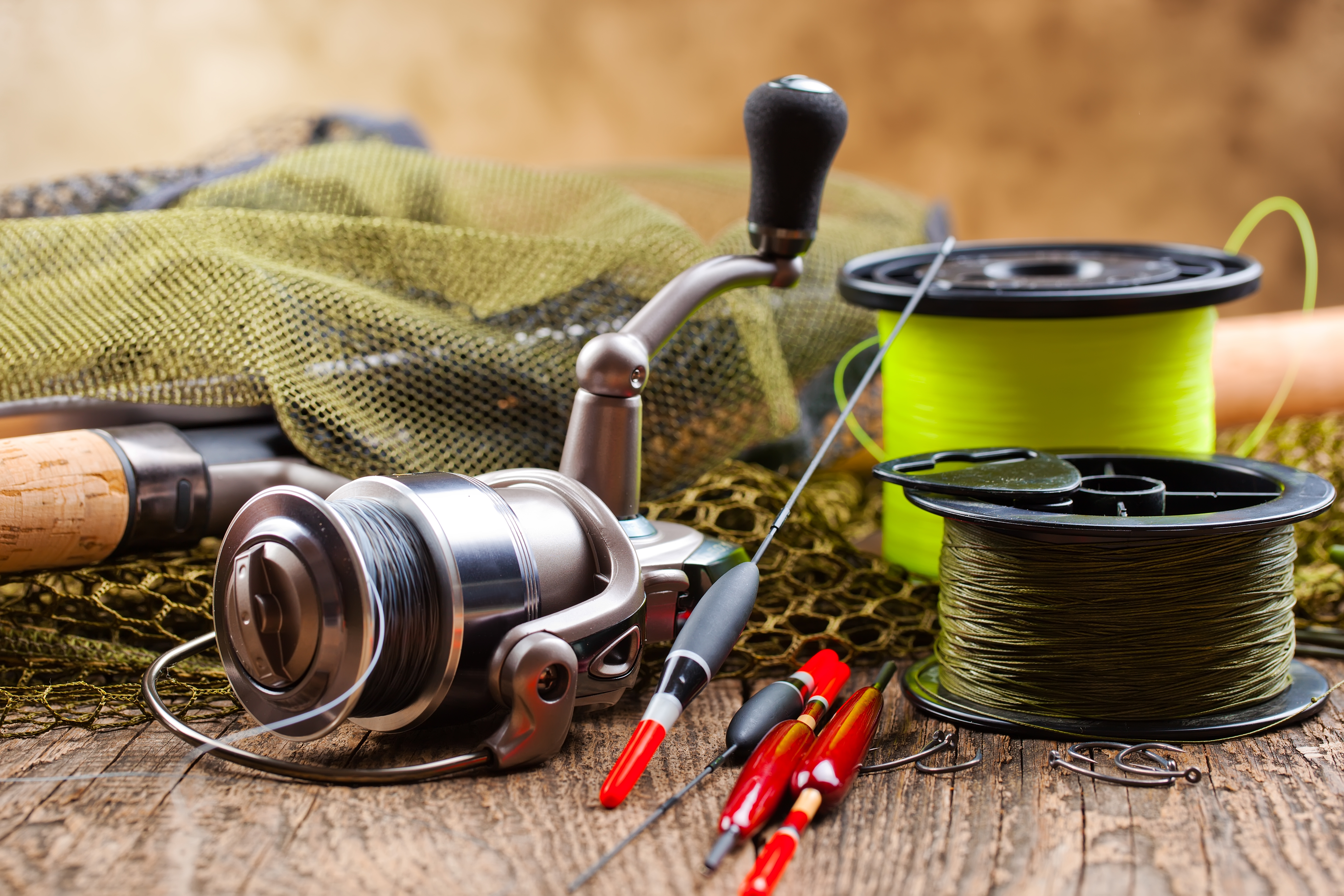It’s Time to Clean Your Gear

By Dennis Doyle
Fall can be a magical time of the year for an angler—until it’s not. Stiff winds and chilly temps will bring a stop to this prime time but the days can still be useful.
My gear has experienced a dreadful and widespread lack of attention of late; it is grouped in corners, loosely piled on rod racks, and stacked in jumbles as it came out of the boat, laden with the excesses of a busy summer season.
There’s not much time for maintenance before the fall flurries begin in earnest but good gear can operate only so long before things begin to go wrong. So when bad weather threatens, it’s a good time to begin a fall cleaning schedule and I like to begin with a half dozen outfits on my front porch, next to the garden hose.
Starting with a good wet-down then a spray with a kitchen cleaner, I start a series of three or so rods at a time with a rag covering the reels. It’s not a good idea to expose reels to a hard spray or introduce any kind of cleaner into their innards—it can mix with the lubricants and dilute them, or worse. A good light water spray followed by a scrub with a cloth or brush will loosen the fish and bait slime from the rod shafts and a stiff brush will free the guides from any accumulated gunk.
An air dry followed by a spray of heavy-duty silicone will give everything a nice shine and keep it free from immediately becoming foul again when back in action. The reels need special attention and a toothbrush with silicone or WD-40 for the more stubborn grit can generally clean any type of fouling. Be careful with using WD-40 as, while it is a great cleaner and rust stopper, it will also penetrate mechanisms and dilute the internal lubricants.
Pay special attention to the level wind gearing on casting reels and the handles on spin gear, they will tend to foul the worst. Attention with a toothbrush and a spray of silicone or CorrosionX will go a long way toward restoring full functionality. A few drops of light machine oil will keep the level wind mechanisms in top order.
Check your reels’ line levels, separate any reels with noticeably low levels, and either strip the remaining line off and replace it with fresh to the proper level, or drop it off at your favorite sports store for renewal. Low line levels will shorten casting distances, modify drag settings and generally put you in danger of losing large fish.
Opaque or foggy monofilament is a sure sign of needing replacement; check any kind of questionable mono by tying a simple overhand knot and giving the line a good yank. Line fatigue can cause mono up to 20-pound test to easily break with much less force than its rated strength, not something you’d like to experience with a good fish on the line. Even top-brand mono is relatively inexpensive; so don’t take a chance on losing the lunker of the season to false economy.
Knots in your leader setup are a particular cause for concern. They are not dormant, constantly flex, and will eventually wear and weaken the line over time. Cut them off and retie them, remember to lubricate all knots with your saliva when drawing them tight. If in doubt, cut them off and retie them—you’ll never regret the effort.
Inspect all of your braided lines—the first sign of wear is in the color. Faded or a light color change can indicate aging; braid cannot be permanently died and will bleach out in the highest-use areas. Cut off the last 10 feet or so of the lightest colored line and retie your connectors.
Check all of your hooks, running them across your thumbnail—if they don’t immediately dig in, they have gotten dull and will resist setting in the fish’s mouth. Replace them. Once again, it’s cheap and easy, and, keep in mind, the biggest fish always have the toughest mouths.
The final items to attend to are your rods’ cork handles. They take a lot of punishment over an active season but can easily be restored. A sponge (do not use a brush) loaded with kitchen cleanser and rubbed vigorously over the entire surface of the corks will clean it up nicely; rinse the handle well with fresh water and allow it to dry thoroughly. When dry, anoint the corks with 100 percent neatsfoot oil and set it aside. The oil will be absorbed by the cork and restore its natural resilience.
Now relax and reward yourself for a job well done.
